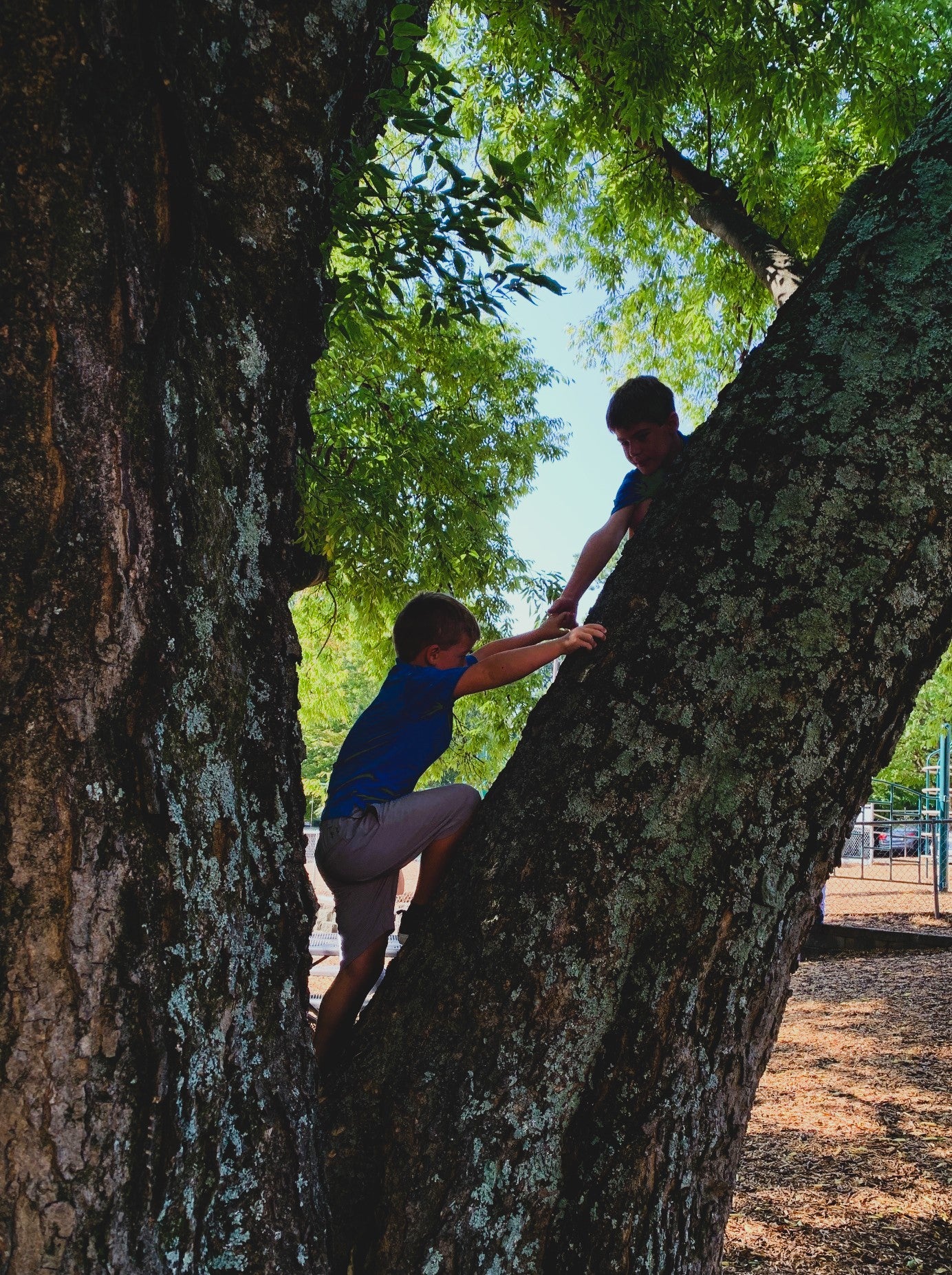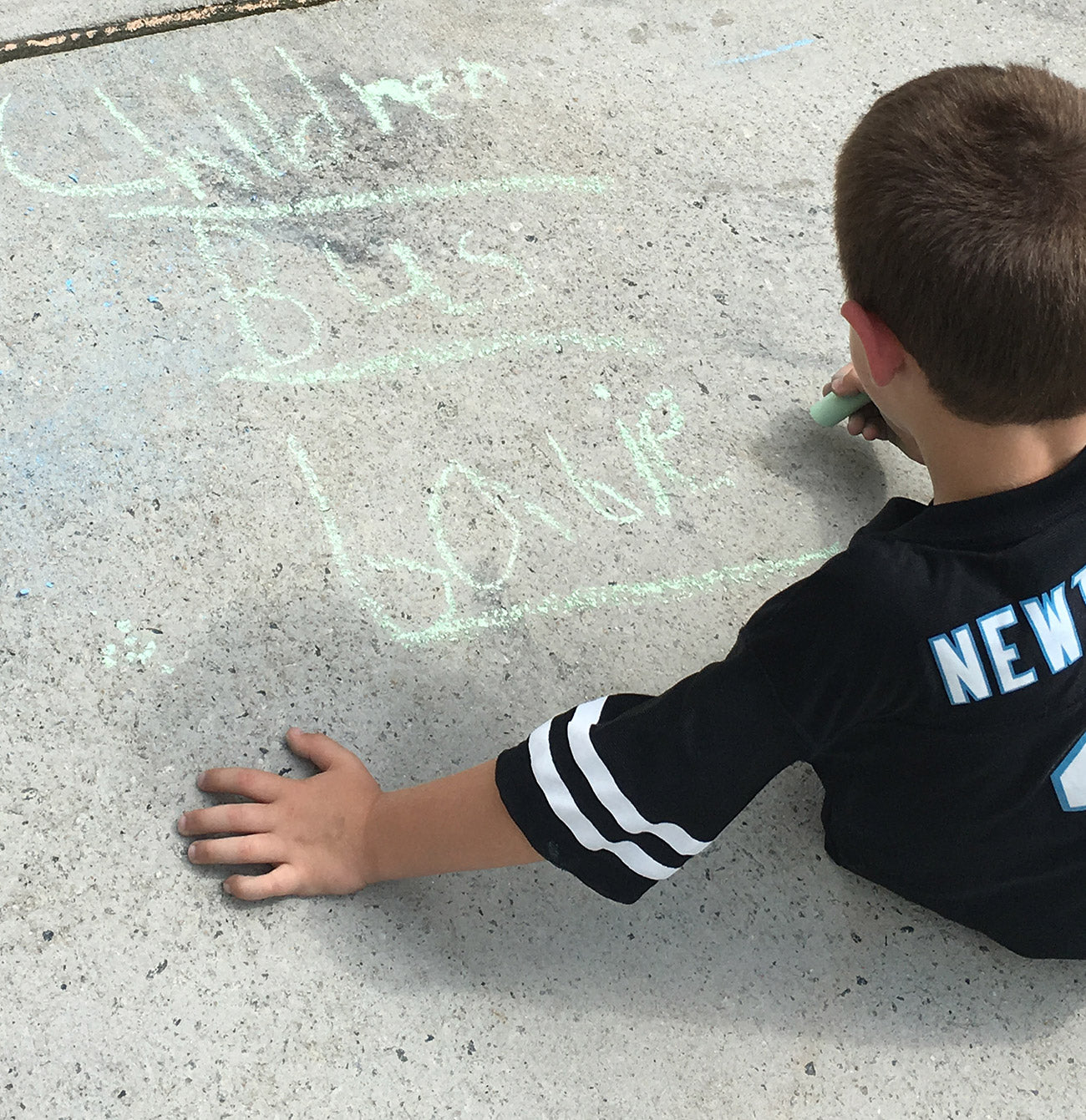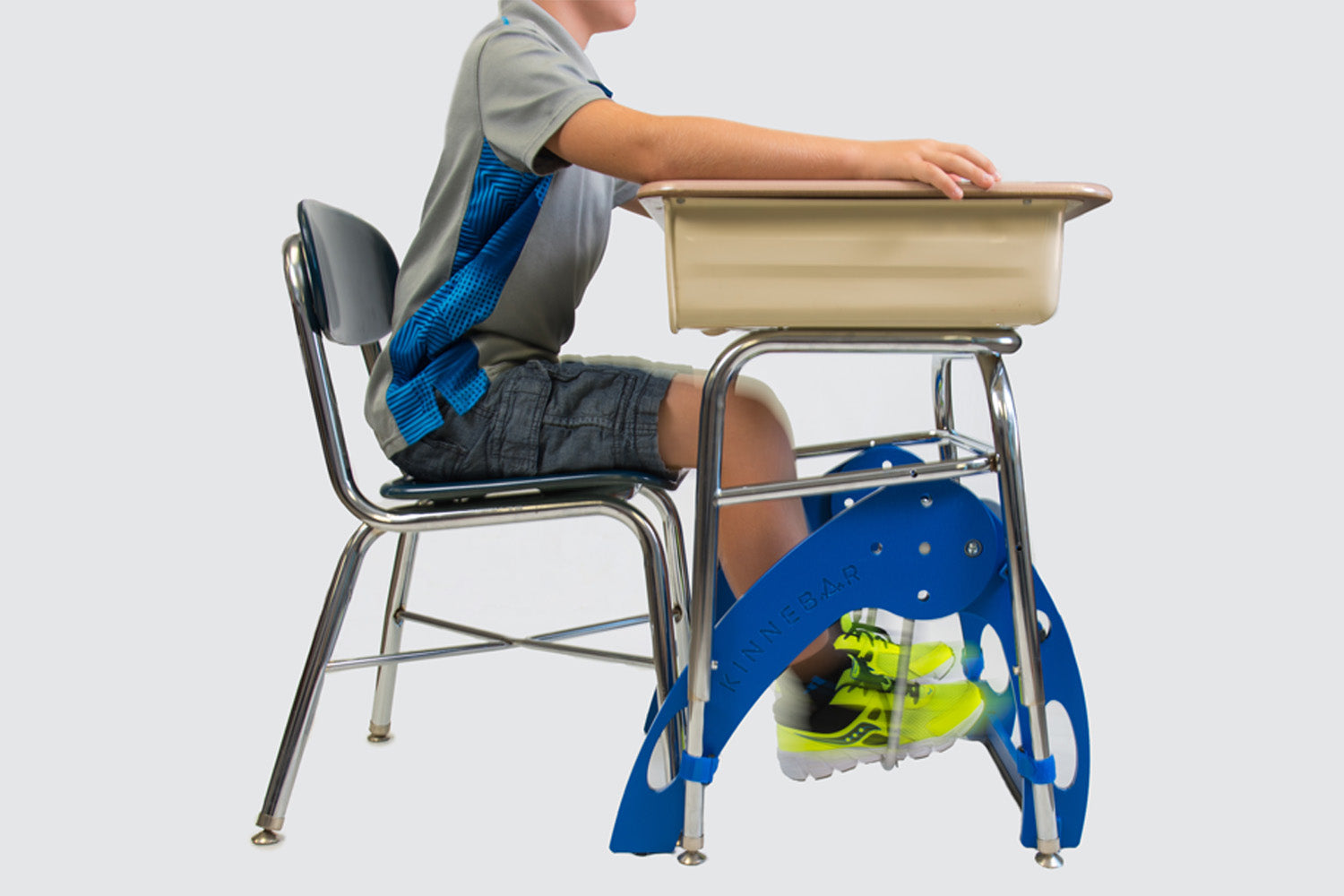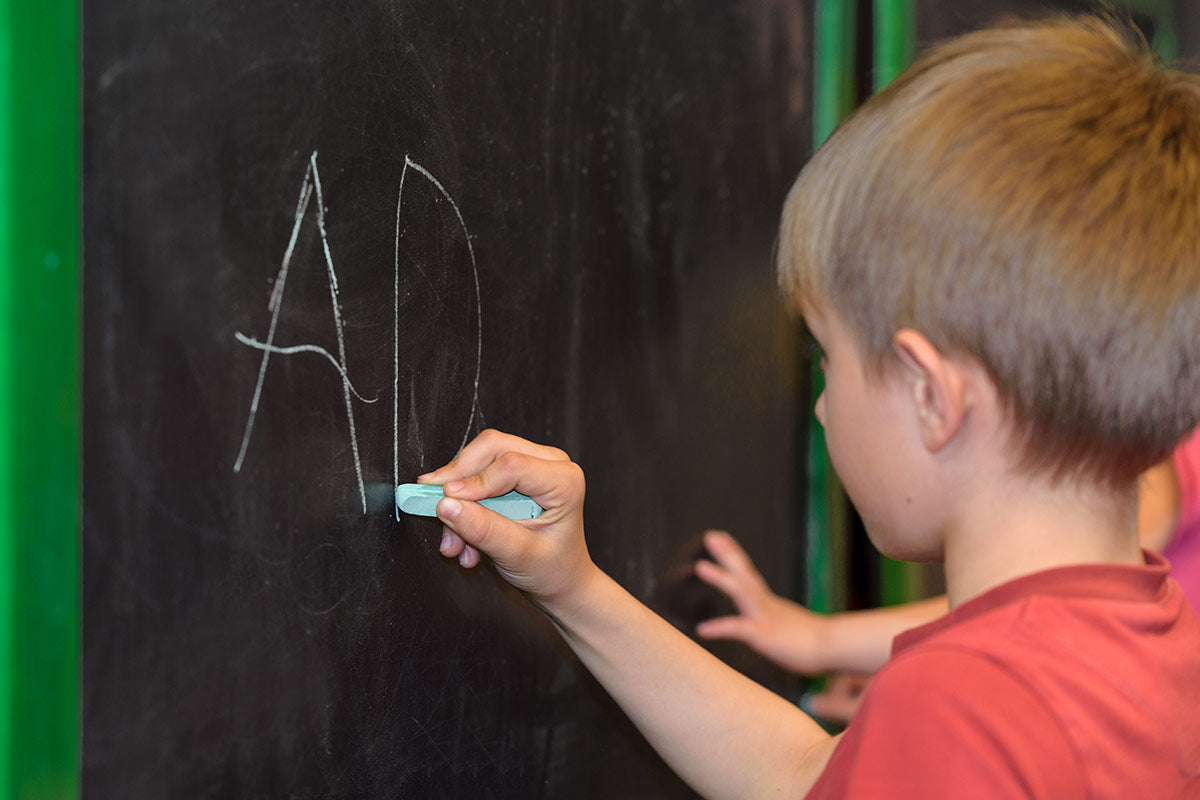THEY SAY THAT NECESSITY IS THE MOTHER OF INVENTION. WELL, IN THIS CASE IT WAS ACTUALLY THE MOTHER AND THE FATHER.

Our Boys
We are the proud parents of two very active young boys. Both have always been exceptionally agile, with amazing gross motor skills and a desire to learn through curiosity. They are incredibly smart, yet it was hard for them to sit still and concentrate for long periods of time.
One day while doing homework at our kitchen table with our oldest son I noticed that he was sitting quietly, writing neatly and focused on his work. I sat back, observed, and was amazed…this was not typical behavior at homework time for our family. I looked under the table and his feet were swinging like crazy! We decided to experiment at home and keep him moving during his homework and study times.

We quickly noticed things like:
He was more successful writing his spelling words in chalk outside (we actually emailed these to his teacher and she loved it).
He thrived if we encouraged him to bounce a ball or do jumping jacks between assignments.
He could read with more focus and for longer stretches of time once we gave him a basketball to roll under his feet.

Inspired, we took to the internet
After researching a lot, we had an A-HA MOMENT. We realized our son is a KINESTHETIC LEARNER which means he needed to move, listen and touch things to learn. Next, we searched to find non-disruptive tools he could use while he was actually in class, but nothing was quite right. EVERYTHING MADE HIM MOVE TOO MUCH! He wobbled. Fell off inflatable balls. Even spun in circles!
We decided to create something for our son and fidgety children like him. After almost two years, lots of tweaks, testing and additions, KINNEBAR® was born. And with it, children, including our two boys, are obtaining fantastic results.
Multi-column
WHAT IS A KINESTHETIC LEARNER?
Kinesthetic learners need to move their bodies in order to learn. These students are often called "fidgety," and some teachers might interpret their behavior as if they are distracted or not paying attention. On the contrary, a kinesthetic learner's movement does not imply a lack of attention. In fact, it means that they're trying to process information in the most effective possible way. This is why the KINNEBAR can be very beneficial.
STRENGTHS OF KINESTHETIC LEARNERS:
- Great hand-eye coordination
- Excellent motor memory (can duplicate something after doing it once)
- Excellent experimenters
- Good at sports
- Perform well in art and drama
- High levels of energy
OTHER PARENTING TOOLS WE LIKE:
- ADDITUDE Magazine and e-newsletters
- Understood.org
- 8 Keys to Parenting Children with ADHD by Cindy Goldrich MEd
- Ben Blanchet’s Book: Maybe Autism Is My Superpower - a teenager on the autism spectrum who shares his story about his many talents and interests
- Most states have a parent advocacy group - a non-profit organization run by parents who have children with learning differences/special needs. If you need assistance with an IEP, 504, school intervention, healthcare, etc. search online for “parenting advocacy organization in (insert your state)”. Here is the one we used in North Carolina: https://www.ecac-parentcenter.org/




